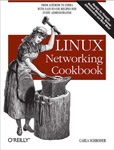(Dr.) Brian Ward, Author
How Linux Works; What every superuser should know, is described by the publisher as a book suitable for systems administrators and home users if they want to know “how it boots, how networking works, how to customize the kernel…all of which you need to understand before you can master the Linux internals."
In the Linux world there are custom compilations, know as distributions, that provide users with a relatively easy to use GUI (graphical user interface) environment consisting of menus, icons and mice - not all that different from Windows or the Mac. This book is not oriented to that nice Linux GUI environment – it moves directly to command-level Linux and attempts to unravel what is really happening under that nice GUI interface. For those that have worked with command-level DOS (Disk Operating System) or the command prompt in Windows and therefore believe you're ready for command-level Linux – be forewarned-- command-level Linux is very different, more complex and far more powerful.
This book seems most oriented towards readers that are somewhat technically-proficient and anxious to take a peek ‘under’ the Linux hood to better understand file modes and permissions, error messages, scripts, and symbolic links. It is not a step-by-step how-to guide that starts with general concepts, moves to the specifics, and then walks you through your exploration; it just provides a general introduction to selected components of Linux (and it’s kissing cousin UNIX).
Content is divided into chapters such as The Basics, How Linux Boots, Configuring Your Network, Development Tools, and Printing. Within each chapter is a collection of related sub-topics. The author generally takes each sub-topic, provides some general insight and includes a brief example or two. The subject of text editors is handled in two-thirds of one page with the author briefly discussing the major attributes of two popular editors and leaving the choice to you based on your personality. In the case of utilities, the author briefly explains what the utility is for and then provides an example of a command using that utility.
The publishers have generously provided examples of the content: Chapter 3, How Linux Boots (PDF) can be found at http:// www.nostarch.com/download/howlinuxworks_ch3.pdf, and Chapter 10, Maintaining the Kernel (PDF) can be found at http:/ /www.nostarch.com/download/ howlinuxworks_ch10.pdf The author's writing style is generally easy to read and he has apparently worked hard to avoid being too technical and detailed.
On the other hand, I found some of the book's organization and content to be a little confusing. For example, the basename command is described as a way to strip the extension off of a file name. Naturally, my question is why would I want to because that is not a wise move in the Windows or DOS world. For the truly technical this book may prove disappointing because of its lack of depth. For those only familiar with the GUI-side of Windows, it may also prove disappointing. In Windows, Microsoft has gone to considerable effort to shield users from the complexities of the underlying operating system. To print a document in Windows you click on a printer icon.
This book takes you through the multiple system components, control files, servers, filters and more required to simply print
your documents. To get the most from this book, the reader should have a Linux system already installed, create a backup to allow easy recovery if you mess up, and then go through the book several time while actually experimenting with the various commands, modifying scripts, or installing a new application. This will build confidence and allow the reader to familiarize himself with the basic technical details needed to navigate, configure and control Linux.
How Linux Works was written by Dr. Brian Ward, a Ph.D. in computer science currently living in San Francisco and working as a consultant and instructor. He is author of the Linux Kernel-HOWTO, The Book of VMware (No Starch Press), and The Linux Problem Solver (No Starch Press). The suggested retail price is $37.95 but is available at Amazon.com new for $25.05 or used for $16.99.
Product Information: How Linux Works What Every Superuser Should Know
(Dr.) Brian Ward, Author
No Starch Press
O'Reilly Media, Inc., Distributor
800-998-9938
www.oreilly.com
List Price: O'Reilly Media: $37.95 (UG Price $26.56 - Free Shipping)





